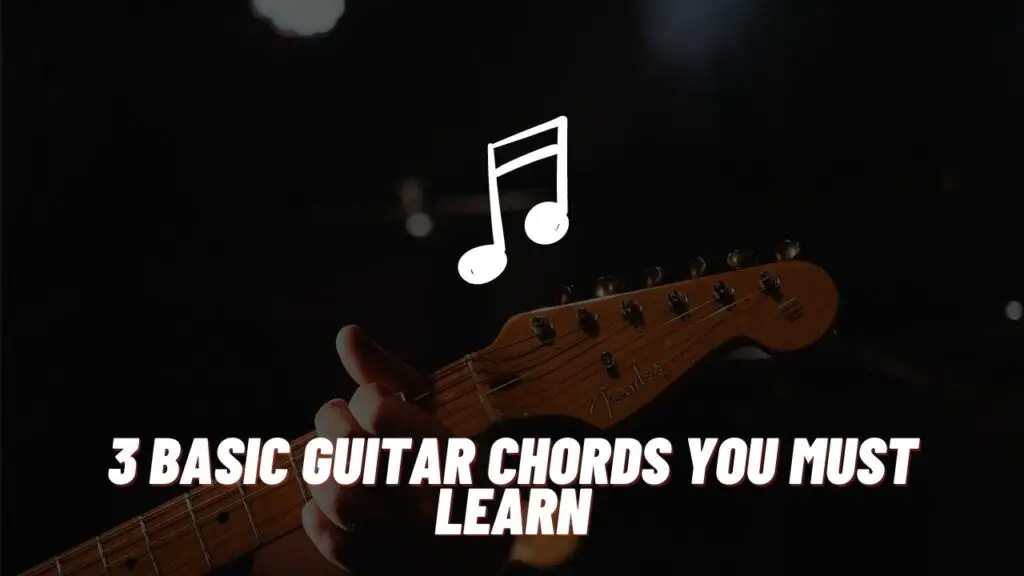Guitar finger exercises are a great way to warm up before playing any song or performance and also a great tool to get full control over the fretboard.
If you type guitar exercise on Google, you will find thousands of patterns and sequences that you can obviously try.
But today in this post I have laid down 8 exercises that will not only improve your overall technique but also help you to build finger dexterity, strength, and independence.
Why Guitar Finger Exercises are Important?
You might have noticed how experienced guitarists pick up a cheap guitar and still sound awesome!
Well, they are able to do that easily because of the guitar exercises they have practiced for countless hours.
When you will do these drills every day for 15-20 minutes, your fingers will become stronger and when you play anything on the guitar it will feel lighter instead of getting fatigued.
Also, Read – How Slash Learned to Play The Guitar
So, here are 8 guitar finger exercises that you must practice daily
1. Don’t lift your fingers until needed

This is a chromatic exercise that is very simple yet tricky yet powerful. This exercise is perfect to improve the synchronization between your picking and fretting hand.
To play the exercise correctly, start by picking the 5th fret of the 6th string with your 1st finger, then the 6th fret with your 2nd finger, the 7th fret with your 3rd finger, and the 8th fret with your 4th finger.
Here the important part is when you complete all the notes on the 6th string and when you jump to the 5th string, play the 5th fret of the 5th string with your 1st finger while keeping the rest three fingers, i.e, 2nd, 3rd, and 4th on the 6th string itself. ( If you find this confusing, please refer to the first exercise mentioned in the above video )
Now lift your 2nd finger to play the 6th fret of the 5th string while keeping the rest 2 fingers on the 6th string itself and so on. You have to repeat this on every string and make sure to play as slowly and clearly as you can.
This is a very common exercise among guitarists but if this is new to you, you may experience string buzz in the beginning. As you practice it for some time, you will notice a huge difference in the synchronization between your fretting and picking hand.
In the beginning, make sure to start as slow as you can because this exercise won’t work if not played correctly. After you are done with this pattern, you can apply the same principle on different frets, for example, 6-7-8-9.
Also, Read – 7 Common Guitar Mistakes
2. Angular Chromatics

This is again a chromatic exercise that is angular in motion. As we already know that the arpeggios are angular in shape, this exercise is going to improve your arpeggios playing ability and smoothen your chord plucking skills.
As you can see in the tabs, the first note is starting from the 1st fret of the D string and travels to the 2nd fret on the G string, 3rd fret on the B string, and 4th fret of the 1st string. You can also see that the notes are descending back from the 1st fret of the 1st string to the 2nd fret B string to the 3rd fret of the G string and stopping in the 4th fret of the D string.
Here you have to use 1 st finger for 1st fret, 2nd finger for 2nd fret, 3rd finger for 3rd fret, and 4th finger for 4th fret.
Make sure to start slow and use alternate picking to play this exercise. This is one of my personal favorite warm-up sequences that I practice every day and it always works. By practicing this exercise every day for 10 mins I can guarantee that it will improve overall techniques like hand synchronization, picking ability, and string judgment.
3. Single String Sequence

This exercise is like a tongue twister for fingers which you have to execute on a single string at once. As you know that a guitar solo or a melody consists of many twisted notes at different positions of the neck, this exercise will help in freeing your fingers so that it will be easy for you to tackle all the finger movements needed while playing them.
As you can see in the tab, the notes are not in order because they are designed to trick your fingers. Here you have to use 1st finger for the first fret, the second finger for the second fret, the third finger for the third fret, and the fourth finger for the fourth fret.
Start by playing the 1st fret with your first finger, then instead of playing the second fret, play the third fret with your third finger, then now you have to play the 2nd fret with your second finger and 4th fret with your pinky finger.
In the second bar, play the second fret with the first finger, fourth fret with the third finger, third fret with the second finger and 5th fret with your pinky finger. Similarly use the same principle to play all the bars.
Start this exercise from the 1st fret of the 1st string and travel all the way to the 12 fret then make sure to descend. Repeat this same sequence on every string including ascending and descending. This exercise will surely help you in freeing your fingers and give your fingers more independence.
This exercise is for sure going to confuse you in the beginning because it is designed that way. Make sure to practice it in a slower tempo with a metronome and use up and down ( alternate ) picking every time.
4. Spider Exercise

I am sure you have heard about this exercise but this version is a little different from the versions that you will find on the internet.
As you can see in the tabs, the notes are ascending from the 1st fret of the 6th string to the 2nd fret of the first string and are descending from the 1st fret of the 1st string to the 1st fret of the 6th string. This is the only exercise on this list that covers all 6 strings.
Here you have to use 1st finger for the first fret, 2nd finger for the 2nd fret, 3rd finger for the 3rd fret, and 4th finger for the fourth fret.
For the ascending part, start by playing the 1st fret of 6th string with your 1st finger, 2nd fret of 5th string with 2nd finger, 3rd fret of 4th string with 3rd finger, 4th fret of 3rd string with 4th finger. Now you have to play 3rd fret of the 2nd string with your 3rd finger and 2 fret of 1st string with 2nd finger. Now, let’s see the descending part.
To descend, play the 1st fret of 1st string with 1st finger, the second fret of the second string with the second finger, third fret of third-string with third finger, fourth fret of the fourth string with your pinky finger. Now use your third finger to play the third fret of the 5th string, second finger for the second fret of 6th string, and 1st finger for 1st fret of 6th string.
This exercise may seem confusing at first but use the fingers as I have mentioned above. Make sure to start at a tempo you are comfortable with and gradually increase the speed.
5. Two Finger Exercise

This is a two-finger exercise that you can use to improve your overall technique. First, you can do this exercise using your first 2 fingers, then 2nd and 3rd fingers, and then 3rd and your pinky finger. You can practice it anywhere on the neck but in this post, we will be using the first two frets.
Here you have to use your first finger for the first fret and the second finger for the second fret. So, let’s start off with the ascending pattern.
Start off by playing the first fret of the 6th string with your first finger and the second fret of the 6th string with your second finger. Using the same principle ascend to the high E string. Now comes the descending part.
To descend, play the 1st fret of the 2nd string with the first finger and the second fret of the second string with the second finger.
Using the same principle descend to the 6th string. After you are done with the first 2 frets, again do it on the second and third fret using your second and third fingers. Similarly using your third and pinky finger repeat the same pattern on the 3rd and 4th fret.
We often miss out on working on our third and 4th fingers, so, by doing this exercise with all the fingers you will make sure that all your four fingers are getting the same amount of pressure and workout. Start off slow and use alternate picking to ascend and descend.
6. 6 Notes per string Exercise

This 6-note per string exercise is one of my favorites that I practice often. It is actually in a triplet form and will surely help your fingers to build dexterity and independence.
As you can see in the tabs, there are only 6 notes per string but that is actually 4 notes with two repeated notes. Here the 2nd fret and 3rd fret notes are repeated once.
For this exercise, we will be using our 1st finger for the 1st fret, 2nd finger for the 2nd fret, 3rd finger for the 3rd fret, and 4th finger for the 4th fret.
Start by playing the 1st fret of the 6th string with your 1st finger, 2nd fret with your 2nd finger, and 3rd fret with your 3rd finger. Now you can see that the 2nd fret and 3rd fret are repeating, so again use your 2nd and 3rd finger to play it and lastly, you have to play the 4th fret with your pinky finger.
Repeat the same thing on all the strings to ascend and descend. Make sure to start slow and gradually increase the speed.
7. String Skipping – 1


If you feel difficult to jump to the next string while playing a scale or a solo then this exercise will help you improve in that area.
As you can see in the ascending tab, the notes are starting from the 1st of the 6th string then goes to the 2nd fret of the 5th string, again the 3rd fret of the 5th string, and ends in the 4th fret of the 5th string. Similarly, it continues to the 1st string.
Here you have to use your first finger for the first fret, the second finger for the second fret, the third finger for the third fret, and the fourth finger for the fourth fret.
You have to make sure that you ascend and descend using alternate picking and one note per click. As you feel comfortable at a slower tempo, you can gradually increase the speed.
8. String Skipping – 2

This string-skipping exercise is similar to the above one but here you have to skip the second string and directly jump to the third string.
Using this same principle you have to ascend and descend using up and down picking and playing one note per click.
At first, this exercise will confuse you but as you practice with a metronome or a beat it will feel much easier to play. After practicing this exercise for 1 week daily for 10 mins I can guarantee that there will be visible results.
Summing Up
Practice these 8 guitar finger exercises every day for 5 to 10 mins and I guarantee that after a week you will start seeing some visible results. Your fingers will feel lighter whenever you play anything on the guitar. Though I recommend you to practice all 8 patterns, you can pick out your favorite exercise from these 8 and include it in your daily practice routine.
Affiliate Disclosure – Some of the links on this post are affiliate links, which means that we may get a commission if you click on the link and sign up. We only recommend products and services that we trust and believe in. Thanks for supporting our site!




